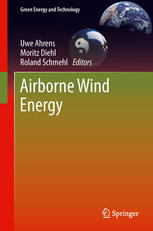

Most ebook files are in PDF format, so you can easily read them using various software such as Foxit Reader or directly on the Google Chrome browser.
Some ebook files are released by publishers in other formats such as .awz, .mobi, .epub, .fb2, etc. You may need to install specific software to read these formats on mobile/PC, such as Calibre.
Please read the tutorial at this link: https://ebookbell.com/faq
We offer FREE conversion to the popular formats you request; however, this may take some time. Therefore, right after payment, please email us, and we will try to provide the service as quickly as possible.
For some exceptional file formats or broken links (if any), please refrain from opening any disputes. Instead, email us first, and we will try to assist within a maximum of 6 hours.
EbookBell Team

4.8
94 reviewsThis reference offers an overview of the field of airborne wind energy. As the first book of its kind, it provides a consistent compilation of the fundamental theories, a compendium of current research and development activities as well as economic and regulatory aspects. In five parts, the book demonstrates the relevance of Airborne Wind Energy and the role that this emerging field of technology can play for the transition towards a renewable energy economy. Part I on "Fundamentals" contains seven general chapters explaining the principles of airborne wind energy and its different variants, of meteorology, the history of kites and financing strategies. Part II on "System Modeling, Optimization and Control" contains eight contributions that develop and use detailed dynamic models for simulation, optimization, and control of airborne wind energy systems, while Part III on "Analysis of Flexible Kite Dynamics" collects four chapters that focus on the particularly challenging simulation problems related to flexible kites. Part IV "Implemented Concepts" contains eleven contributions each of which presents developed prototypes together with real-world experimental results obtained with the different concepts. Finally, in Part V on "Component Design", five papers are collected that address in detail the technical challenges for some of the components of airborne wind energy.
Airborne Wind Energy presents all basics in a single source to someone starting to explore wind power in the upper atmosphere and serves as a valuable reference for researchers, scientists, professionals and students active in the innovative field of Airborne Wind Energy.